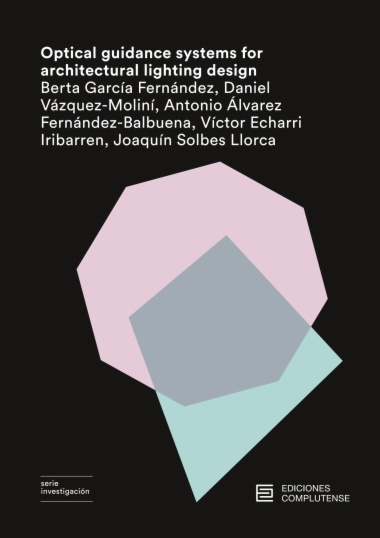The increasing consideration of research and technological development in fields such as energy and new advanced materials, along with the environment and health creates great interest regarding the integration of natural lighting in the architecture. This book covers a wide range of study of techniques and design analysis of optical guide systems for architectural lighting design providing a quantitative estimation of the in?uence of numerous factors that a?ect the transport of light in hollow light guides in order to contribute to the prediction of performance. Furthermore, it is presented a detailed analysis of guided of light in optical systems such as hollow prismatic guides together with the development of new mathematical models and methodologies that facilitate the prediction of transported luminous flux and efficiency of systems.
- Cover
- Title page
- Copyright page
- Contents
- General index
- Index of figures
- Index of tables
- Chapter 1. Introduction
- Chapter 2. Light and architecture
- 2.1. Radiation and human life
- 2.2. Sunlight and sense perceptions
- 2.3. Light and architecture
- 2.4. Architecture and climate
- 2.5. Architecture, light and contemplation
- 2.6. The reflected light
- 2.7. Reflected light and colour: Temporary variations
- 2.8. Natural and artificial light
- 2.9. Buildings and night lighting
- 2.10. L ight and architecture: Beauty
- Chapter 3. Basic lighting concepts in architecture
- 3.1. Research on light
- 3.2. Lighting measurements and standards
- 3.2.1. Measurements of optical radiation: Radiometry and photometry
- 3.3. Lighting design in architecture
- 3.3.1. Color temperature and its use in architecture
- 3.3.2. Perception of volume with light
- 3.3.3. Visualization of light
- 3.3.4. Light distribution: Direct vs. indirect lighting
- 3.3.5. Solid State Lighting (SSL)
- 3.3.6. LED lighting examples
- Chapter 4. Principles on light guidance
- 4.1. P ropagation of light in optical media
- 4.1.1. Reflection and refraction
- 4.1.2. Total Internal Reflection
- 4.2. L ight guidance systems in architecture
- 4.2.1. Light collection systems
- 4.2.2. Light transport systems
- 4.2.3. Light extraction systems
- 4.2.4. Fiber optic guides
- 4.2.5. Hollow light guides
- 4.2.5.1. Prismatic optical lighting film
- 4.2.5.2. Hollow Prismatic Light Guides
- Chapter 5. Lighting by Hollow Prismatic Light Guides
- 5.1. L ight extraction system applied to buildings
- 5.1.1. Daylight illumination system by vertical Hollow Prismatic Light Guides for an office building
- 5.1.2. Evaluation of the luminous flux of the prismatic extraction system
- 5.2. High efficiency customizable elbow
- 5.2.1. Design and characterization of a 90º elbow
- 5.2.2. Theoretical efficiency of 90º elbow
- 5.2.3. Efficiency of 90º elbow in hollow light guides
- 5.2.4. Performance in prismatic guides with 90º elbow, experimental prototypes
- 5.3. Illumination system by vertical hollow prismatic light guide with a customizable elbow applied to museums
- 5.3.1. Customizable Bend Lighting System (BLS)
- 5.3.2. Ray-tracing simulations, bend lighting system performance
- 5.3.3. Experimental customizable Bend Lighting System (BLS)
- 5.4. Outdoor lighting, automotive lighting
- 5.5. Chromaticity in Hollow Prismatic Light Guides
- 5.5.1. Measurement of color
- 5.5.2. Chromatic difference between prismatic and aluminum cylindrical guides
- 5.5.2.1. Chromatic analysis and theoretical analysis
- 5.5.2.2. Chromaticity in cylindrical guides, experimental setup
- 5.5.3. Influence of the geometry of light guides
- 5.5.4. Color performance in guides by theoretical analysis
- 5.5.5. Geometry influence in light guides
- Chapter 6. Mathematical transmission efficiency model for Hollow Cylindrical Prismatic Light Guides
- 6.1. E fficiency in hollow light guides
- 6.2. Characterization method of microprismatic defects
- 6.2.1. Approximation of defects in vertices in relation to the radius of curvature
- 6.3. Mathematical model to compute transmission efficiency
- 6.4. Transmission efficiency in Cylindrical Prismatic Light Guides, theoretical analysis
- 6.5. Transmission efficiency in Cylindrical Prismatic Light Guides, experimental method
- 6.6. Mathematical transmittance model, adjustment procedure
- 6.7. Source size influence
- Chapter 7. Characterization of deformation by curvature of prism structure
- 7.1. Deformation characterization method of curved prismatic film
- 7.2. Light transmission in cylindrical prismatic guides, experimental model
- 7.3. Light transmission in cylindrical prismatic guides, theoretical analysis
- Chapter 8. Conclusions
- Bibliography

